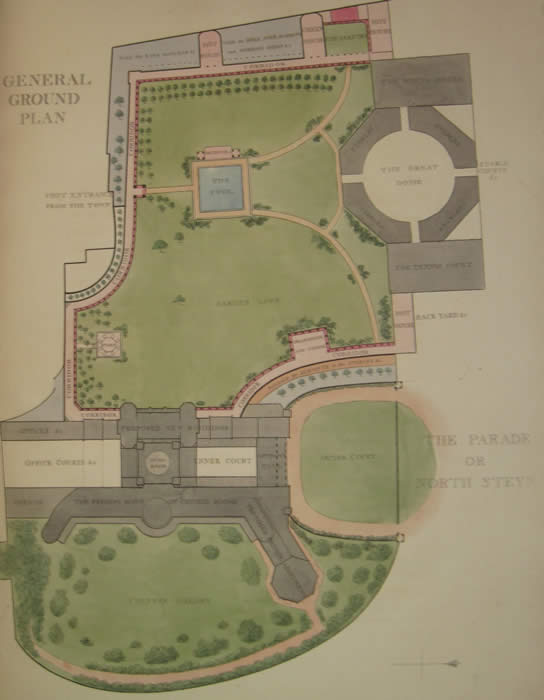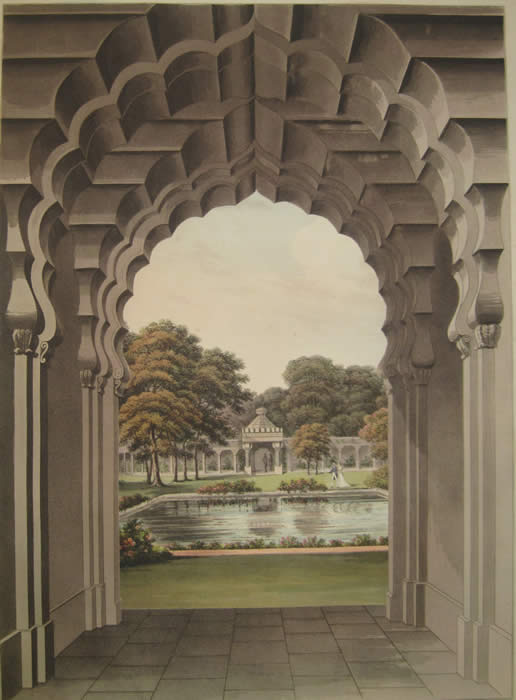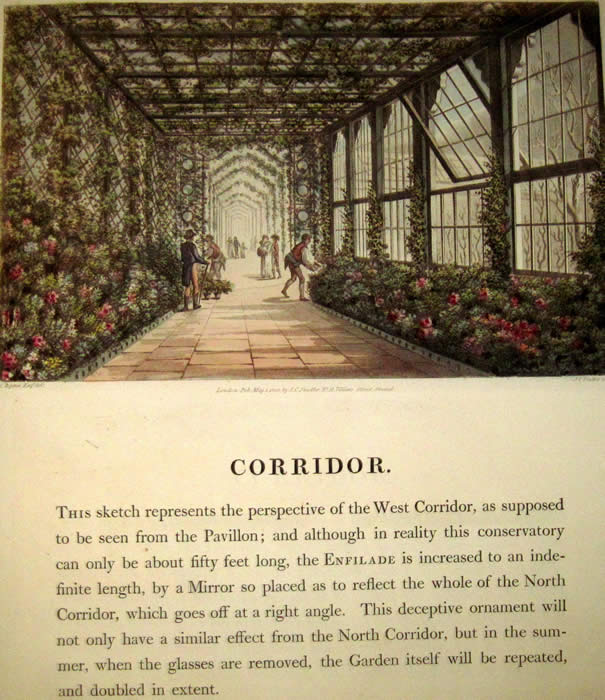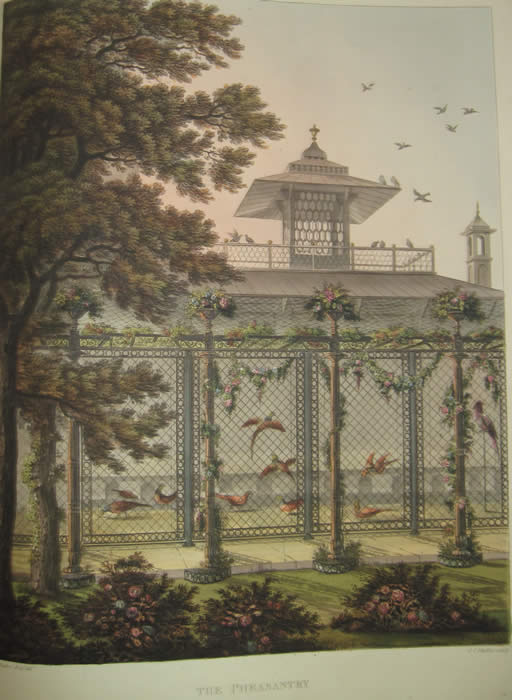
DESIGNS FOR THE PAVILION AT BRIGHTON. |
|
|---|---|
 |
 |
 |
 |
REPTON, Humphrey. DESIGNS FOR THE PAVILION AT BRIGHTON.
London: T. Bensley, 1808. Large folio. Contemporary blue paper boards. (iv), x, 41 pages, 9 unnumbered aquatint plates, which include 2 monochromes; a colored plan; 4 colored plates of which 2 with overslips and 2 double-paged with overslips. First edition. [Abbey, Scenery, 55].
The best summation of Repton's work is from Ben Weinreb: "This magnificently produced volume contains the complete record of Repton's Indian phase. In 1804 Repton advised Sir Charles Cockerell on the detail for Sezincote, using the largely unpublished sketches and measured drawings made by Daniell. 'I was pleased at having discovered new sources of beauty and variety,' and this pleasure was expressed in a little pamphlet published by Taylor in 1806 called An Inquiry into the changes of Taste in Landscape Gardening and Architecture. The text, with some fine aquatint illustrations, is reprinted at the end of the Designs. Its theme is elaborated on in the 'prefatory remarks' which recount how shortly after Sezincote Repton had been summoned to Brighton again, how he had conceived the idea of adapting the different existing parts into a new-style totality, and how his "red book" of the scheme had won the Prince's wholehearted approval and permission to publish the designs in the present work. The plates include a general plan and two of the largest (and most straightforwardly deceiving) plates-with-flaps Repton ever published. Among the text illustrations are some charming vignettes explaining the different basic principles involved in Grecian, Gothic and Indian architecture, and a large plate of the 'endless variety of columns used in Hindu architecture.' the volume was prepared in close collaboration with Repton's two sons, John Adey (who had already broken with Nash) and George Stanley (who stayed with Nash to become his chief assistant during the years when Nash's new designs for the Brighton Pavilion were put into execution, in preference to those for which Repton had received official approbation many years earlier." Neatly rebacked in calf. Old armorial bookplate. Fine untrimmed copy.
SOLD